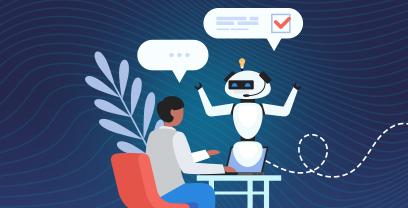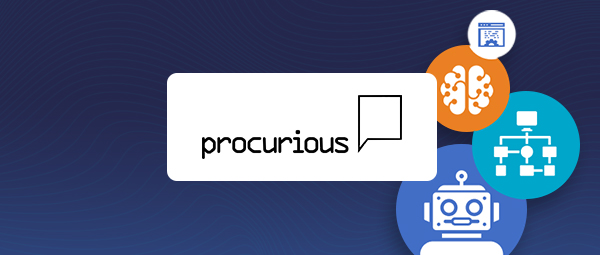In the first installment of this series, we explored the fundamentals of AI agents in procurement. We learned what they are, why they’re suddenly so relevant, and some of the initial considerations CPOs should have in mind. Now we need to shift focus and talk about how it all comes together with implementation.
In this second part, we’ll look at the culture shift that AI agents can bring, discuss how to set up your procurement function for success, and delve into the sometimes thorny subject of compliance. By the end, you should have a clearer roadmap for integrating AI agents into your source-to-pay processes without causing unnecessary friction or disruptions.
Kay Takeaways
- AI has the potential to transform procurement functions by creating efficiency, enhancing strategic initiatives, and evolving roles within the organization.
- Successful adoption requires thoughtful implementation, cultural preparedness, and adherence to compliance standards.
- By carefully balancing innovation with oversight, enterprises can build agile and future-ready procurement systems.
Laying the Foundation for AI Adoption
There’s a significant step we must consider before a vendor contract is even signed–and that has to do with the organizational framework.
Leadership and Buy-In
C-level executives need to champion AI initiatives. That means securing budget, demonstrating commitment, and communicating the strategic importance of AI to the rest of the organization. If AI projects are perceived as an “IT experiment,” they’re less likely to succeed.
Process and Workflows
Identify which procurement processes are most suitable for AI-driven automation. Often, these are the repetitive or data-heavy steps—like purchase order creation, invoice matching, contract compliance checks, supplier onboarding or autonomous sourcing. Having clear process maps will help you spot opportunities for quick wins.
Review Procurement Technology Data
Review the procurement technology you are using today, especially from the perspective of data cleanliness and accessibility. AI needs clean, accurate, and available data to function properly. How clean and accurate is the data within your procurement technology? Is it accessible, including through the right APIs? Without a good approach to your data, your AI will be limited, or worse, may produce bad results.
Harness the power of AI technology in procurement in our latest Webinar: Enabling AI-Powered Procurement: Exploring the Now and the Next”.
Cultural Impacts and Change Management
Even the most sophisticated AI agent can’t thrive in a hostile or unprepared work environment. There are other factors that we must address when looking at AI agent implementation.
Transparency
Many employees fear that AI will make their roles redundant. Address these concerns directly. Emphasize that AI aims to offload mundane tasks, freeing people to focus on strategic, high-impact projects. Transparency about potential job shifts or new responsibilities will go a long way in reducing anxiety and push back.
Training & Upskilling
Offer training programs that help employees understand how to work alongside AI agents. For instance, procurement officers might need to learn how to interpret AI-driven spend analytics or work in tandem with sourcing agents. Skills related to data interpretation, vendor relationship management, and ethics are increasingly valuable in an AI-enabled environment.
Measuring Adoption
Define metrics to gauge AI adoption, such as the percentage of processes automated, additional savings captured by AI, or improved cycle-time due to AI automation. Communicate these metrics openly to celebrate milestones and refine strategies when adoption plateaus.
Building a Winning Roadmap for AI Agents
Phase 1: Pilot Program
Start small with a focused approach. Deploy an AI agent to automate this process and establish a compelling proof of concept. Track key metrics, like time saved and error reduction, to quantify the impact. Present these results to stakeholders to demonstrate the value and potential broader applications of AI in your operations.
Phase 2: Scale Up
Once the pilot is successful, gradually integrate AI agents into more complex tasks (like dynamic supplier selection or supplier onboarding).
Phase 3: Full Integration
The ultimate goal is a seamless ecosystem where AI agents communicate with the core procurement platform, data repositories, and company data / policies. This interconnected framework aims to unlock cross-functional insights—such as linking procurement data with financial planning or sales forecasts—empowering smarter, more strategic decision-making across the organization.
Building these pilot programs not only mitigates risk but also helps secure incremental wins that keep the organization motivated and invested. Read more in our Whitepaper: “Powering Procurement Transformation with Autonomous AI Agents”.
Job Replacement vs. Job Evolution
From data entry clerks to category managers, the influence of AI is reshaping the landscape of procurement roles. But it’s not just about job replacement—it’s about evolution. Here’s the distinction that matters:
Reduced Manual Labor
Tasks like data entry, invoice matching, and basic compliance or document checks, repetitive steps can be largely automated. This could mean some roles become redundant or shift focus.
Increased Analytical Demands
With data entry out of the way, procurement professionals can focus on higher-level analytics, negotiations, and supplier innovation. Some might even step into AI oversight roles—such as interpreting model outputs or setting governance policies.
New Collaborative Opportunities
AI agents need “human in the loop” oversight, especially for exceptional cases or nuanced decision-making. Procurement experts can offer context that AI simply can’t discern from data alone—like the nuances of a long-standing supplier relationship.
As you can see above, while certain roles may become obsolete, new opportunities emerge to meet the demands of a changing world. Next, we address the changes to more procurement processes, from regulatory compliance to managing intricate contractual obligations.
The Role of Compliance and Risk Management
Procurement is inherently risk-heavy, from regulatory compliance to contractual obligations. While leveraging AI agents can streamline operations and enhance efficiency, they also bring unique challenges and risks if not appropriately governed. Striking the right balance between innovation and vigilant oversight is essential to ensure these tools support, rather than compromise, your organization’s compliance and risk management objectives.
Auditing AI Decisions
Make sure you can trace how an AI agent arrived at a recommendation (e.g., awarding a contract to a specific supplier). Audit trails and explanatory features are becoming standard in AI solutions, but it’s vital to validate that these exist and work well.
Company Data & Policy
Ensure that the AI agent is acting in compliance with company policies and data privacy standards. Striking the right balance between innovation and oversight is essential to ensure these tools support, rather than compromise, your organization’s data compliance and risk management objectives.
Ethical AI Use
Some AI models inadvertently inherit biases from their training data. If your historical procurement data overlooked diverse or small suppliers, your AI might perpetuate that bias. Regularly review outcomes to ensure fair treatment of all potential suppliers.
Regulatory Alignment
Different regions have varying laws around data privacy and usage. If your procurement operations span multiple countries, confirm that AI-driven data collection and usage comply with each relevant jurisdiction. Many of these regulations are both new and constantly evolving, making it essential to stay informed and up-to-date with the latest legal changes.
Stay Innovative, Remain Diligent
By now, you should have a clearer sense of how AI agents might slot into your procurement function and the kind of strategic groundwork you need to lay. While the road to AI-driven procurement can be bumpy—especially when tackling cultural resistance and compliance concerns—it ultimately opens the door to a more agile, insightful, and future-ready procurement operation.
FAQ’s
- What procurement processes are most suitable for AI-driven automation? These processes are the repetitive or data-heavy steps—like purchase order creation, invoice matching, contract compliance checks, supplier onboarding or autonomous sourcing.
- What Are the New Job Opportunities Emerging from AI? With data entry out of the way, procurement professionals can focus on higher-level analytics, negotiations, and supplier innovation. Some might even step into AI oversight roles—such as interpreting model outputs or setting governance policies.
- How do you stay compliant while leveraging AI agents? Tracking AI agent audit trails, adhering to company policies and data privacy standards, continuously reviewing AI data, and closely following regional regulations and laws.
Further Reading
Whitepapers:
- Powering Procurement Transformation with Autonomous AI Agents
- Generative AI in Procurement A Practical Guide to Building Your Roadmap
Blogs:
- Part 1: The Arrival of AI Agents in Procurement – Understanding the Basics
- Embracing GenAI and Building Resilience for the Future
- Leveraging Generative AI to Transform Procurement in the Middle East
- Accelerating Adoption of Generative AI in Procurement
- Transforming Procurement with Generative AI: A Practical Approach




